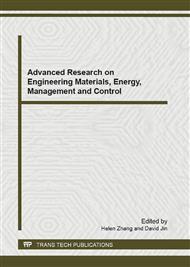p.1293
p.1297
p.1301
p.1305
p.1309
p.1313
p.1318
p.1322
p.1326
Research on Monitoring Instrument of Environmental Condition
Abstract:
A monitoring instrument of environment condition is described in this paper, which uses the LPC2368 as the controller. The acquisition of environmental condition is realized by using SHT11, which is a digital temperature and humidity sensor. A DS1302 is used as the real time reference clock device, and the time message is displayed on the LCD together with the environment temperature and humidity. As if the temperature or humidity is beyond the setting range, the alarm light and sound will be switched on to inform the manager. At the same time, the alarm message could be sent out to other monitor center by RS485 interface. Experimental results show that the temperature and humidity monitor features small, reliable performance, small error, and be suitable to a wide range.
Info:
Periodical:
Pages:
1309-1312
Citation:
Online since:
January 2012
Authors:
Price:
Сopyright:
© 2012 Trans Tech Publications Ltd. All Rights Reserved
Share:
Citation:


